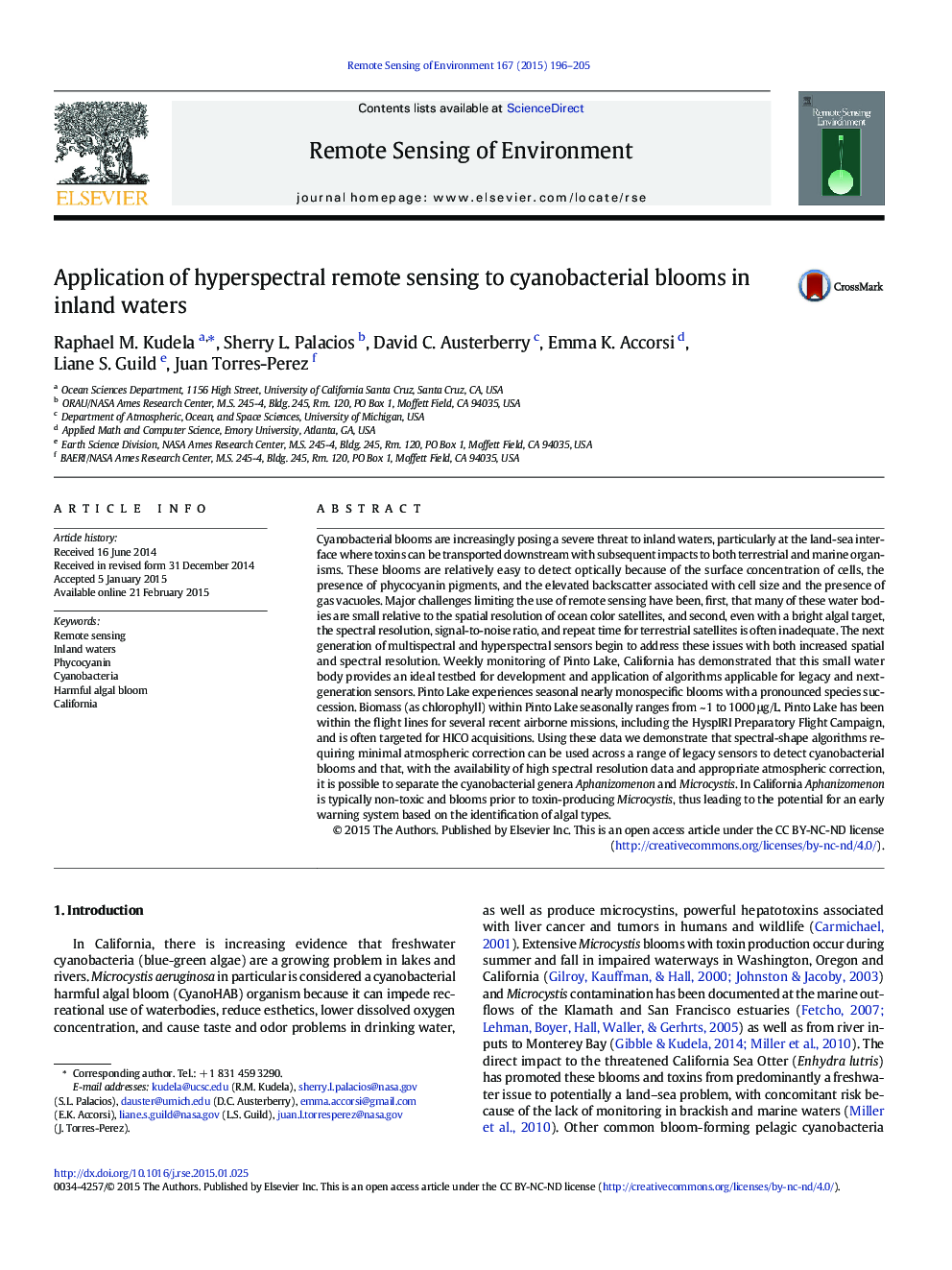| کد مقاله | کد نشریه | سال انتشار | مقاله انگلیسی | نسخه تمام متن |
|---|---|---|---|---|
| 6345887 | 1621233 | 2015 | 10 صفحه PDF | دانلود رایگان |
- We develop a spectral shape algorithm for cyanobacteria based on scattering.
- We develop a spectral shape algorithm separating Microcystis and Aphanizomenon.
- We apply these algorithms to MASTER, HICO, and AVIRIS data.
- These methods can improve operational monitoring of small inland water bodies.
Cyanobacterial blooms are increasingly posing a severe threat to inland waters, particularly at the land-sea interface where toxins can be transported downstream with subsequent impacts to both terrestrial and marine organisms. These blooms are relatively easy to detect optically because of the surface concentration of cells, the presence of phycocyanin pigments, and the elevated backscatter associated with cell size and the presence of gas vacuoles. Major challenges limiting the use of remote sensing have been, first, that many of these water bodies are small relative to the spatial resolution of ocean color satellites, and second, even with a bright algal target, the spectral resolution, signal-to-noise ratio, and repeat time for terrestrial satellites is often inadequate. The next generation of multispectral and hyperspectral sensors begin to address these issues with both increased spatial and spectral resolution. Weekly monitoring of Pinto Lake, California has demonstrated that this small water body provides an ideal testbed for development and application of algorithms applicable for legacy and next-generation sensors. Pinto Lake experiences seasonal nearly monospecific blooms with a pronounced species succession. Biomass (as chlorophyll) within Pinto Lake seasonally ranges from ~ 1 to 1000 μg/L. Pinto Lake has been within the flight lines for several recent airborne missions, including the HyspIRI Preparatory Flight Campaign, and is often targeted for HICO acquisitions. Using these data we demonstrate that spectral-shape algorithms requiring minimal atmospheric correction can be used across a range of legacy sensors to detect cyanobacterial blooms and that, with the availability of high spectral resolution data and appropriate atmospheric correction, it is possible to separate the cyanobacterial genera Aphanizomenon and Microcystis. In California Aphanizomenon is typically non-toxic and blooms prior to toxin-producing Microcystis, thus leading to the potential for an early warning system based on the identification of algal types.
Journal: Remote Sensing of Environment - Volume 167, 15 September 2015, Pages 196-205
